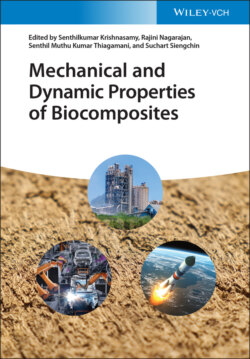Читать книгу Mechanical and Dynamic Properties of Biocomposites - Группа авторов - Страница 16
1.4.1.1 Bagasse/Jute FRP Hybrid Composites
ОглавлениеJute is a popular plant‐based fiber (vegetable) with dominant presence in tropical countries across the Asian continent, such as China, Brazil, Nepal, Bangladesh, India, and Thailand. They account for about 95% of jute fiber (JF) production worldwide [4]. Jute is considered as a lignocellulosic bast fiber, having comparative advantages with respect to renewability, biodegradability (which makes it eco‐friendly), high strength as well as high initial modulus over other fibers [11]. Bagasse, also called sugarcane bagasse, is a lingocellulosic by‐product of the sugar industry, mostly utilized as a fuel in boilers and sugar factories. Compared with other residues (by‐products), including wheat straw and rice, bagasse is preferred, because its ash content is lower [19].
A study of mechanical behavior of hybrid FRP composites with short JF and short bagasse fiber (BF) bundles reinforcement was carried out by Saw and Datta [20]. They used epoxidized phenolic novolac (EPN) as resin matrix and investigated various fiber surface treatments and fiber ratios. Sodium hydroxide (NaOH) alkali solution was used to treat the JF bundles. The BF bundles were either modified using chlorine dioxide (ClO2) and furfuryl alcohol (C5H6O2) or left untreated. The modification of the fiber surface was necessary for quinones creation in the lignin areas of the BF bundles. The created quinones then reacted with the furfuryl alcohol, and thereby improved the BF bundles' (modified) ability for better adhesion. Their result revealed greater mechanical responses (flexural, tensile and impact properties) for hybridized BF (modified) and JF bundles (alkali‐treated) in the EPN resin matrix than the BF bundles that were not modified. They obtained an optimum mechanical behavior at a BF/JF ratio of 50 : 50, as depicted in Table 1.5.
